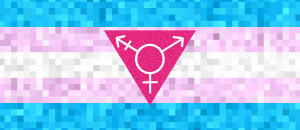There has never been a time in which it is more important for healthcare professionals to be knowledgeable about LGBT (and specifically transgender) issues. This is not limited to adult medicine – many transgender individuals are aware of their feelings from a young age.
What follows are a few general definitions (adapted from my post on Geeky Medics, which can be found here) followed by a more paediatric-specific discussion, with some useful references.
Gender, sex and sexuality are three distinct classifications.
Sex is a biological categorisation – male, female or intersex. This is defined by a number of features; including internal and external reproductive organs and sex chromosomes.
Gender is the association of a persons’ behaviour, feelings or actions to a biological sex category, and is a societally formed definition. In Western culture we refer to male/female and masculine/feminine. Traditionally, gender is portrayed as binary (with only two distinct options). The more modern view accepts gender as a spectrum. The term non-binary describes people who identify and/or present somewhere along the spectrum. Gender consists of expression and identity, which may not be congruous. Gender identity describes a person’s inward feelings and self-perception; gender expression refers to the gendered image of ourselves communicated to society (by outfits, haircuts etc.).
Sexuality describes who we are (or are not!) attracted to. There are many different descriptive and definitive labels, including heterosexual, lesbian, gay, bisexual, asexual and pansexual.
When a child is born, it is boldly proclaimed “It’s a boy!” or “It’s a girl!” based on external genitalia (usually). This is the gender assigned at birth. For the vast majority, gender assigned at birth matches the individual’s gender identity in later life – these people are cisgender.
Trans is a prefix used to denote that a person has adopted a gender role different to that which was assigned at birth. Often it is used in relation to a person who has undergone (or plans to undergo) treatment and/or surgery to change their image from one binary gender to the other, in order to match their gender identity. Trans* refers to all identities under the “trans” umbrella. This includes non-binary identities, trans men and trans women. The asterisk at the end recognises and aims to represent the many different gender identities in existence. (If it helps, it took me about a year to stop looking for a footnote when someone wrote “Trans*”)
A trans man is a person who was assigned female at birth but now presents as male (sometimes referred to as FtM). A trans woman is a person assigned male at birth, who now presents as female (sometimes referred to as MtF).
Many people initially get confused about which is which, so I’m going to use hair colour as an analogy to try to help. Two people are born – one brown-haired, one blonde-haired. If the person with brown hair starts to dye their hair blonde, people may say the person has “Dyed-blonde hair”. They are described using the colour of hair that they currently have with a prefix, rather than the hair colour they were born with. This concept applies for trans men and trans women. As time passes others may point out the two people together as ‘blondes’, dropping the prefix (because it is not known about, not recognisable or not important). When this happens in relation to trans* status, it is referred to as stealth.
The terms non-binary and genderqueer describe identities or expressions of gender which do not reflect traditional gender distinctions. These people may identify with neither, both or a combination of male and female genders. For some, this may involve constantly evolving feelings of gender identity and expression (genderfluidity); for others there is just no clear affiliation with either binary gender. Non-binary people may or may not feel the need for medical and/or surgical treatment.
The term dysphoria describes severe distress and discomfort caused by the mismatch of sex and gender identity. The levels of dysphoria vary hugely from person to person and may also change day-to-day.
Treatment comes in a variety of forms including psychological, medical and surgical therapies. The main medical issue within child medicine would focus around delaying puberty. Whilst there is a fear that a child may be “going through a phase”, gender identity is usually a long-standing characteristic rather than a fluctuant trend. As with many other parts of our intrinsic self and personality, it is likely to remain relatively constant throughout life. There is, however no pressure or need to initiate specific treatment alone. There are two main paediatric gender clinics which young transgender and gender questioning people can be referred to – these are situated in London and Leeds. However, there are also many simple and easy to implement measures which can make a large difference to the wellbeing of gender variant, gender questioning and transgender children as they grow up. Allowing children to express who they are through their preferred gendered clothing, toys and hobbies can increase their self-esteem and reduce mental distress. Having an understanding and knowledgeable doctor when presenting can really make the difference. Parents of gender variant children are likely also to require some support and guidance.
Below are some useful resources for further information and which can be used in practice.
Mermaids – Support for transgender and gender non-conforming young people and their families
GIRES: The Gender Identity Research and Education Society. (Including a useful booklet for parents of gender variant or gender questioning young people)
Gendered Intelligence: a community organisation which primarily supports young trans* people over the age of 11
